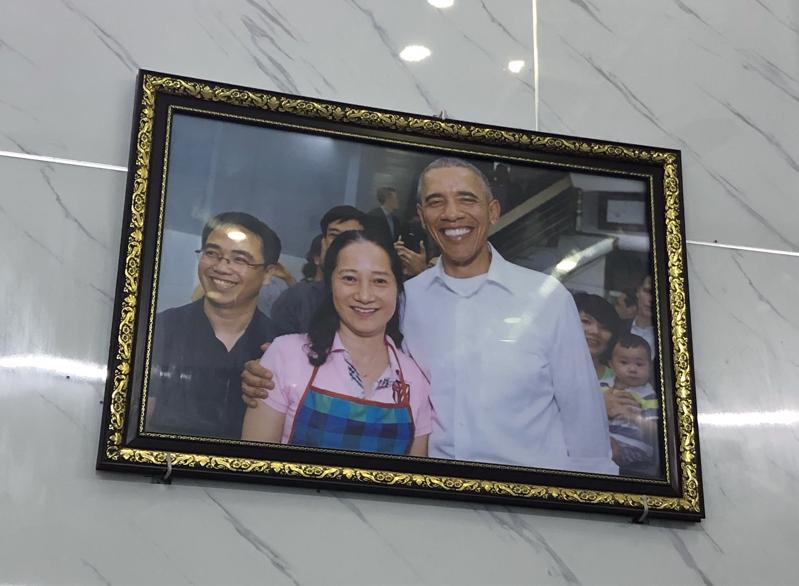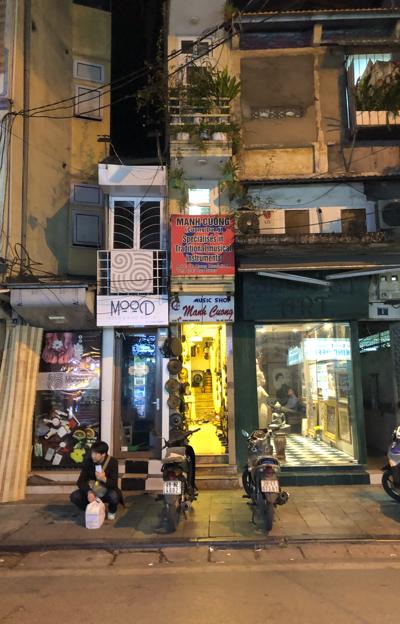My diary
AJ’s Story:
It’s our last day in Hanoi before our flight to Cambodia. The pangs of homesickness are starting to set it. We decide to try something that might agree with Jaimie’s stomach a little more, pizza and pasta at an Italian restaurant. Marco Polo took the secrets of Asian cooking back to Italy, it only seems fair that that the Vietnamese returned the favor. The margarita pizza and spaghetti bolognese are surprisingly good and offer a respite from Vietnamese food.
Our last morning in Vietnam, we decide to visit Ho Chi Minh’s mausoleum. Ho Chi Minh died in 1969, and every year since his body has been shipped to Russia for two months to be maintained. Arriving in this area you are reminded that Vietnam is an authoritarian communist country, not a liberal democracy. Throughout the trip we’ve been inundated with merchants peddling wares, it seems like a very capitalistic place. But throughout this government area in the capital there are signs stating no photography, there are military police on every corner. Even the entrance to the museum is strictly fenced off with only one point
Leaving Vietnam
December 17, 2019
|
Hanoi, Vietnam
AJ’s Story:
It’s our last day in Hanoi before our flight to Cambodia. The pangs of homesickness are starting to set it. We decide to try something that might agree with Jaimie’s stomach a little more, pizza and pasta at an Italian restaurant. Marco Polo took the secrets of Asian cooking back to Italy, it only seems fair that that the Vietnamese returned the favor. The margarita pizza and spaghetti bolognese are surprisingly good and offer a respite from Vietnamese food.
Our last morning in Vietnam, we decide to visit Ho Chi Minh’s mausoleum. Ho Chi Minh died in 1969, and every year since his body has been shipped to Russia for two months to be maintained. Arriving in this area you are reminded that Vietnam is an authoritarian communist country, not a liberal democracy. Throughout the trip we’ve been inundated with merchants peddling wares, it seems like a very capitalistic place. But throughout this government area in the capital there are signs stating no photography, there are military police on every corner. Even the entrance to the museum is strictly fenced off with only one point

of entry and exit.
After going through a checkpoint, having our bags searched we form essentially a long line to the mausoleum. Which lead us around the complex. At the entrance to the mausoleum we wait for a military procession featuring numerous leg kicks and synchronized high steps. The building itself is all square grey polished granite, ostensibly to show the great power of the party. We walk pass the entombed body of Ho Chi Minh. He looks pretty well preserved considering he’s been dead for 51 years. We aren’t allowed to stop walking as we circle his body, or take any pictures.
Things I (Jaimie) learned in Hanoi:
Hanoi is the largest city in Vietnam. It’s almost the same size as New York City. It has that big city feel to it with lots of noise and traffic. It’s almost buzzing all of the time. The city itself is very beautiful, the old buildings have been mostly preserved to their original look and feel, and there are huge trees lining the streets, many over a century old. My only complaint about Hanoi is the air quality. The fumes from thousands of motorbikes made it hard to take a deep breath the entire time were there. Otherwise, I was quite charmed.

The Vietnamese really LOVE President Barack Obama. He came for a visit in 2016 and dined with Anthony Bourdain. AJ and I stoped into the restaurant where he ate and the wall was covered in pictures of him eating there and posing with the owner’s family. In one photo, the owner’s wife and her mother posed in front of a framed picture of him. It was a picture of a picture. They created a special on the menu based on what he ordered and preserved the table he sat it a glass case. It was hilarious and wonderful. The food there was just ok.
Many restaurants in Hanoi are fairly small and contain little to no dining space. Some don’t even have a physical location inside at all, existing entirely out of carts and pop up kitchens on the street. Business will set up tiny plastic chairs and stools on the sidewalk in front of their business or on an alley corner for patrons to grab a quick bite. You’ll find several of these on almost every street and they are always filled with locals. Apparently, this practice is not legal but still very common. In order to avoid penalty, businesses will “tip” their local police officers to look the other way.

During the French colonization there were many taxes imposed on the people that were strange and too burdensome to pay. Peoples houses were taxed not on their price or their size but instead on their width. In order to combat this tax, the Vietnamese would build very narrow row houses, or tube houses, the most narrow famously being 1 meter wide.
People were also taxed based on how many toilets their homes contained, forcing many families on one block to share. We walked down a street in the old quarter that had 13 homes and, back in the day, contained only two toilets. Approximately 50 people shared those two bathrooms alone. Today, some people have built their own but several families would still share in order to save space.
All young Vietnamese men are required to serve in the military for at least two years. Depending on their birthday, they will join either before or after they attend university. If they take the entrance exam before being summoned, they will go to university first. If they get their documents before they have a chance to take the exam, they will serve right away and attend university later.
The people in Vietnam seemed very laid back. They were some of the most friendly and kind people you would ever meet. Everyone we talked too was quick to laugh, easy to talk to and eager to share stories and advice. The government buildings were much more uptight. We visited Ho Chi Minhs body at the Mausoleum and it was a very strict and orderly experience. One entrance, thin orderly lines, no phones or cameras and not a lot of talking. It was very interesting (and a little creepy) to see a 50-year preserved body though.
1.
Chapter One: The Journey Begins
2.
On Arrival: Hoi An
3.
Hoi An: Day Two
4.
Hoi An: Day Three
5.
Final Day: Hoi An
6.
Train to Hanoi
7.
Hoa Lo Prison +
8.
Hanoi: Day Two
9.
Two Days in Ha Long Bay
10.
Leaving Vietnam
11.
On Arrival: Cambodia
12.
Angkor Tombs
13.
Cambodia Final Thoughts
14.
On Arrival: Chiang Mai
15.
Elephant Sanctuary
16.
Temples of Chiang Mai
Share your travel adventures like this!
Create your own travel blog in one step
Share with friends and family to follow your journey
Easy set up, no technical knowledge needed and unlimited storage!